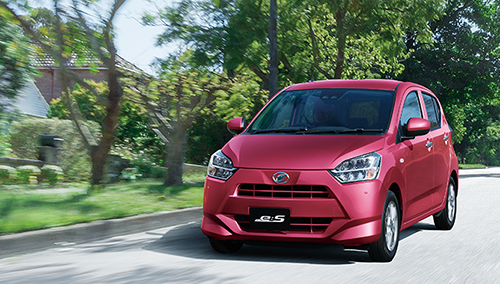
Suzuki alto fuel consumption in kenya
All recent cars have a certain degree of fuel efficiency and environmental performance, but it is also true that there is a large difference in fuel efficiency depending on the model. In addition to affecting fuel costs, fuel economy performance may reduce tax on cars if certain standards are met, so don’t forget to check it when choosing a car.
Here, we will introduce the fuel consumption performance of Suzuki “Alto”.
Fuel consumption characteristics of Alto
The Alto is a historical model that first appeared in May 1979. The eighth-generation current model, which debuted in December 2014, uses the new platform “HEARTECT,” achieving a weight reduction of approximately 60 kg compared to the previous model.
At the same time, the engine has been significantly improved by increasing the compression ratio and optimizing the transmission ratio of the CVT, achieving the highest fuel efficiency in the gasoline vehicle class (*surveyed by Suzuki in December 2014). It’s a feature.
In addition, the energy generated during deceleration is used to generate electricity and charge the vehicle, thereby reducing gasoline consumption and contributing to low fuel consumption. Alto is equipped with various functions that contribute to improving fuel efficiency, such as the “new idling stop system” that automatically stops the engine when it becomes.
Alto’s Catalog Fuel Efficiency
There is only one Alto engine, a 660cc in-line 3-cylinder gasoline engine. The combined transmission is CVT, 5-speed MT for entry grade, and 5-speed AGS of 2-pedal MT that does not require clutch or shift operation.
Both transmissions have 2WD and 4WD drive systems.
Alto’s JC08 mode catalog fuel efficiency is as follows.
| grade | Drive system | transmission | fuel consumption |
|---|---|---|---|
| F. | 2WD | 5 MT | 27.2km/liter |
| 5AGS | 29.6km/L | ||
| 4WD | 5 MT | 25.2km/L | |
| 5AGS | 27.4km/L | ||
| L. | 2WD | CVT | 37.0km/L |
| 4WD | 33.2km/L | ||
| S. | 2WD | CVT | 37.0km/L |
| 4WD | 33.2km/L | ||
| X | 2WD | CVT | 37.0km/L |
| 4WD | 33.2km/L |
Compare the catalog fuel economy of Alto and rival cars
One way to check fuel efficiency is to compare it with rival cars in the same class. Here, let’s compare the catalog fuel efficiency of Daihatsu “Mira Eth”, Subaru “Pleo Plus” and Alto.
Daihatsu “Mira E.S.”
 Source: Daihatsu “Mira E.S.” top page
Source: Daihatsu “Mira E.S.” top page
Daihatsu’s entry-level model, the Mirai Esu, is the main rival of the Alto, with excellent fuel efficiency, excellent safety performance, and an affordable price.
JC08 mode catalog fuel efficiency of Mira E:S is 34.2~35.2km/L for 2WD vehicle and 32.2km/L for 4WD vehicle.
The Mira E.S. also boasts considerable fuel efficiency, but in both 2WD and 4WD vehicles, Alto’s CVT-equipped grade has higher fuel efficiency than the Mira E.S.
Subaru Pleo Plus
 Source: Subaru “Pleo Plus” design
Source: Subaru “Pleo Plus” design
Subaru “Pleo Plus” is a model developed with the motto of a smart car that anyone can drive safely as a car that is close to everyday life. In addition to the economic efficiency required of a mini vehicle, we are also refining the fuel efficiency and basic performance of the vehicle in pursuit of its appeal as a standard for easier-to-use mini vehicles.
Pleo Plus JC08 mode catalog fuel efficiency is 34.2-35.2km/L for 2WD vehicles and 32.2km/L for 4WD vehicles. Since it is an OEM model of Daihatsu “Mira E.S.”, it has the same fuel efficiency as the aforementioned Mira E. E.S. catalog.
Therefore, even in the comparison of Pleo Plus and Alto, Alto has excellent fuel efficiency performance.
Alto actual fuel consumption
When checking fuel consumption, don’t forget to check the actual fuel consumption. This is because in most cases there is a difference between catalog fuel consumption and actual fuel consumption in JC08 mode fuel consumption.
In the first place, JC08 mode fuel efficiency is measured under certain conditions such as driving on a flat and straight road without using lights or air conditioners, and is a numerical value for use as an index.
However, in daily life, driving in various places such as slopes creates a discrepancy between the catalog fuel efficiency and the actual fuel efficiency of any car. The actual fuel consumption varies depending on the road surface condition and driving style, but it is said that the actual fuel consumption is about 30% lower on average.
According to the site “e fuel consumption”, which collects actual fuel consumption data of owners who currently drive Alto, the actual fuel consumption of Alto is 23.07-24.71km/L for 2WD vehicles and 22.75-24.20km/L for 4WD vehicles. Some grades slightly exceed 30%, but the difference between Alto’s catalog fuel consumption and actual fuel consumption can be said to be an average value.
Alto driving performance
 Source: Suzuki “Alto” driving and environmental performance
Source: Suzuki “Alto” driving and environmental performance
Even if it is a light car, we want to stick to the driving performance that is the duty of a car. Let’s check the Alto’s driving performance.
Light running realized by weight reduction
The Alto has improved basic performance by adopting a newly developed lightweight and highly rigid platform. Furthermore, by thoroughly reducing the weight of the engine, suspension, and seats, we have achieved a weight reduction of approximately 60 kg, improving not only fuel efficiency but also driving performance.
You will be able to accelerate without feeling stress even in city driving with many stop-and-go, and enjoy a light and brisk driving.
Improved ride comfort with new suspension
The current Alto has a longer front and rear suspension stroke than the previous model, ensuring a comfortable ride with less shock and shaking.
Enjoy a life with a car with the Alto, which has achieved low fuel consumption
Cars that are used in daily life are especially concerned about fuel costs. The Alto has excellent fuel efficiency and can be said to be the best model for those who want to enjoy their car life while saving fuel as much as possible.









